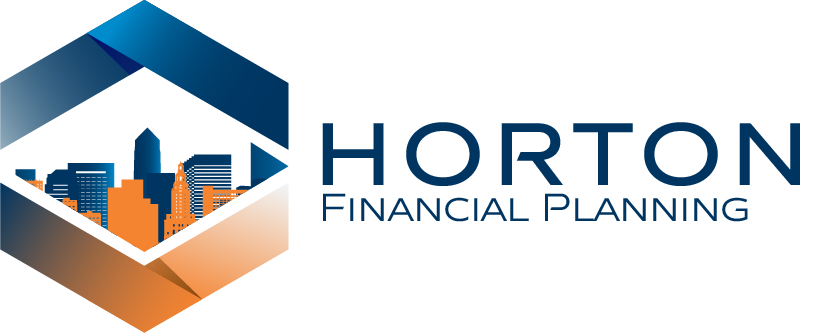Should You Roll Over Your 401(a) to an IRA?
Pros, Cons, and What to Know Before You Decide
If you're preparing for retirement — or just changing jobs — you’ve probably asked yourself:
Most people are familiar with 401(k) plans, but 401(a)s? Not so much. While they serve a similar purpose (helping you build retirement savings), 401(a)s come with their own rules and restrictions.
So the big question becomes: What’s the best thing to do with your 401(a) when you leave your job or retire?
Rolling it into an IRA can offer more control and flexibility, but there are also reasons you might want to leave it right where it is. Let’s look at both sides of the coin.

Why You Might Not Want to Roll Over Your 401(a) Plan
1. You're Still Working and Want to Delay Required Minimum Distributions (RMDs)
Here’s a tax planning strategy not everyone knows: If you’re still employed at age 73, you might be able to delay taking Required Minimum Distributions from your 401(a). That’s a big deal. With an IRA, once you hit the RMD age, you’re required to start withdrawing money — and paying taxes on it — regardless of whether you’re still working or not.
So if you plan to keep working a few more years, rolling your 401(a) to an IRA might force you to start taking income (and increasing your taxable income) sooner than you’d like.
2. If your 401(a) Plan Has Lower Fees or Unique Investment Options
Rolling into an IRA could mean stepping into a retail-level account, where fund expense ratios and advisory fees can potentially be higher. If your 401(a) has solid investment options and competitive pricing, keeping your money there could make more financial sense.
Before making a move, it's smart to do a side-by-side fee comparison and understand what investment choices you may be giving up.
3. You're Doing a Backdoor Roth IRA Strategy
If you’re a higher-income individual using the Backdoor Roth IRA strategy, hold up before initiating that rollover. Why? Because when you move your 401(a) into a traditional IRA, you now have a pre-tax IRA balance that’s subject to the pro-rata rule. The pro-rata rule is a complex tax rule that can cause an unexpected tax bill if you have funds in a traditional IRA.
In other words, if you’ve been making nondeductible IRA contributions with the intent to convert them tax-free to a Roth, adding a big rollover from your 401(a) can muddy the waters — and kill the tax efficiency of your strategy.
If you’re planning to use (or are currently using) the Backdoor Roth method, it may be smarter to leave the 401(a) in place temporarily to keep your IRA balances clean.
7 Tips to Help Maximize Your 401(a)
Whether you're just getting started or have been contributing for years, your 401a retirement plan has more potential than you may realize. In "How to Maximize Your 401a," you’ll get clear, practical strategies to make the most of every dollar you're setting aside for the future.
This guide gives you easy to understand tips and tricks to help you get the absolute most out of your 401(a) plan.
No jargon. No fluff. Just simple steps to help you feel more confident about your retirement path.
Why You Might Want to Roll Over Your 401(a) to an IRA
1. Simplification and Consolidation of Retirement Accounts
Let’s be honest — as you approach retirement, managing multiple accounts can feel like a juggling act. You may have an old pension, a 457, 401(a) — and possibly a few old IRAs or 401(k)s from previous jobs.
That’s a lot of statements, login portals, and required minimum distributions to track in your later years of retirement.
Rolling your 401(a) into an IRA gives you a chance to simplify your financial life. By consolidating your retirement savings into one place, you reduce clutter, cut down on paperwork, and make it much easier to build a coordinated income strategy.
While I wouldn’t suggest this be the only reason you move an account, if you're looking for more peace of mind and a streamlined retirement, the simplicity factor certainly has value and is worth factoring in when considering a move.
2. Greater Investment Flexibility and Personal Management
Most employer-sponsored plans — 401(a)s included — offer a narrow lineup of funds. You may have a few stock or bond funds to choose from, a few index funds, and maybe a few target-date options. That’s it.
Index funds
ETFs
Dividend-paying stocks
CDs and Treasuries
Even alternative investments (in some cases)
Another factor to consider is that you can work with a professional advisor who customizes a portfolio for your specific goals, risk tolerance, and income needs — something you often can’t really do inside a standard 401(a).
If you want more control over your investments and prefer personalized retirement planning, rolling over could be a big step up in flexibility.
3. Strategic Roth Conversions
One of the most powerful retirement tax strategies is the Roth conversion — moving money from a traditional IRA into a Roth IRA. When done correctly, this creates tax-free retirement income down the road and reduces your future RMDs.
But you need to be strategic about when to do it.
If you’ve just retired and aren’t yet collecting Social Security or pension income, you may be in a lower tax bracket for a few years. This window is perfect for partial Roth conversions.
With that flexibility, you can convert the right amount each year, stay in a comfortable tax bracket, and grow money tax-free for the future. Plus, Roth IRAs don’t require RMDs at all — giving you more long-term control and potential legacy benefits.
Bottom Line: Should You Roll Over Your 401(a) to an IRA?
There’s no one-size-fits-all answer, but here’s the good news: you don’t have to figure it out alone.
Rolling over your 401(a) can be a great way to simplify your accounts, gain investment flexibility, and unlock tax strategies like Roth conversions. But depending on your age, job status, plan costs, and tax goals, it might be better to leave it where it is — at least for now.
The key is making a decision that supports your overall retirement plan, not just one part of it.
Ready to talk through your options?
If you’re unsure whether a 401(a) rollover makes sense for you, let’s walk through it together. We’ll take a look at your income needs, and all the moving parts — and help you build a plan that makes sense for the long haul.
Check the background of your financial professional on FINRA’s BrokerCheck.
Securities and investment advisory services offered through Osaic Wealth, Inc. member FINRA / SIPC. Osaic Wealth is separately owned and other entities and/or marketing names, products or services referenced here are independent of Osaic Wealth.
The content is developed from sources believed to be providing accurate information. The information in this material is not intended as tax or legal advice. Please consult legal or tax professionals for specific information regarding your individual situation. The opinions expressed and material provided are for general information, and should not be considered a solicitation for the purchase or sale of any security.
This communication is strictly intended for individuals residing in the state of Florida. No offers may be made or accepted from any resident outside the specific state(s) referenced.
This site is published for residents of the state of Florida and is for informational purposes only and does not constitute an offer to sell or a solicitation of an offer to buy any security or product that may be referenced herein. Persons mentioned on this website may only offer services and transact business and/or respond to inquiries in states or jurisdictions in which they have been properly registered or are exempt from registration. Not all products and services referenced on this site are available in every state, jurisdiction or from every person listed. © 2024

